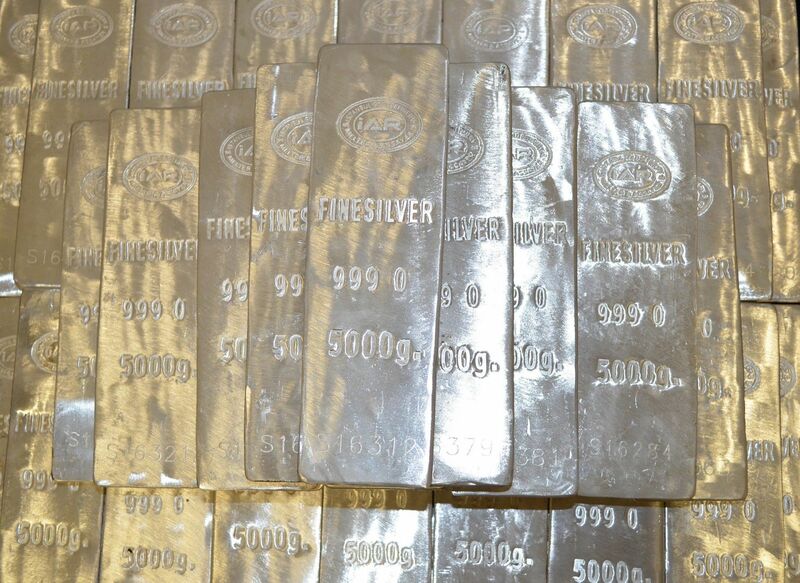
It was less than a month ago that we saw fireworks in the silver market.
After starting 2024 on a low note, silver (SIN24) gained in March on rising Fed rate cut expectations. The resulting upward momentum led silver to break through the $30 mark on May 17. It then went on to reach a 12-year high of $32.36 per ounce on May 20.
Then, not surprisingly, it sold off a bit. But with renewed rate cut expectations on Wall Street, silver is resuming its upward climb. As of June 12, silver is up nearly 26% year-to-date.
Yet in relative terms, silver is still cheap. It currently takes about 80 ounces of silver to buy an ounce of gold, compared with the 20-year average of 68.
Why Silver Now?
Silver has a dual character, valued both for its uses as a financial asset and an industrial input.
One of its main industrial uses is for renewable energy technologies. Silver is a key ingredient in solar panels, and with robust growth in that industry, usage of the metal is expected to reach a record this year, according to the Silver Institute.
Against that backdrop, the market is headed for a fourth year in deficit, with this year’s shortage seen as the second biggest on record.
The Silver Institute said in its World Silver Survey, released on April 17, that industrial consumption of silver hit an all-time high in 2023. And it is expected to expand another 9% this year, driven by renewable energy-related applications, such as the aforementioned solar panels. That will help push the metal to a record fourth straight annual supply shortage.
In 2021, there was a deficit of 81 million ounces, followed by an even larger deficit of 253 million ounces in 2022. Despite these deficits, 2023 marked the second-highest year for annual silver demand on record, with total demand of 1.27 billion ounces!
Over the three-year period from 2021 to 2023, the Silver Institute estimates that there has been a cumulative deficit of 474 million ounces, which is equivalent to 14,743 tons of silver.
The Institute emphasizes that the structural deficit in the silver market will persist well beyond 2024, thanks to significant and expanding industrial demand for silver. In 2023, such demand accounted for about 60% of usage for silver.
That shortage led industrial users — which typically rely on silver miners for supply — to seek supply by tapping the world’s major inventories. Stockpiles tracked by the London Bullion Market Association fell to the second-lowest level on record in April.
Over the next two years, LBMA stockpiles may be depleted given the current pace of demand, according to TD Securities senior commodity strategist Daniel Ghali. He says the headline figure for silver held overstates the available volume of metal. That’s because it also includes the holdings of silver exchange traded funds (ETFs).
The China Factor
Of course, as with most commodities, China is a big factor affecting the price of silver.
Chinese imports of silver may surge in the weeks and months ahead, thanks to the jump in demand that took prices well above international market prices in late May.
Don’t forget that silver is an important material in solar panels, which China continues to build in vast quantities. China’s own stockpiles of the metal have dwindled due to persistently strong demand from its solar industry in recent years.
Silver also remains a cheaper alternative to gold for Chinese investors, who have also been pushing gold to set records on price.
The wave of imports into China could drain away much of the silver inventory sitting in warehouses. That hasn’t even begun to be priced in by markets. So the potential is there for a truly massive move higher.
Here’s how you can play the silver market…
Buy Fortuna Silver Mines Stock
A silver stock to consider is Fortuna Silver Mines (FSM), which is a mid-tier Canadian silver and gold mining company that has been in operation for 19 years. It currently has five operating mines in Argentina, Burkina Faso, Ivory Coast, Mexico, and Peru.
The company also has an extensive growth pipeline of brownfields and greenfields exploration projects in favorable mining jurisdictions throughout the Americas and West Africa.
Fortuna Silver’s Caylloma Mine in Peru has produced silver, gold (GCQ24), lead and zinc since October 2006. Its Lindero Mine in Argentina poured its first gold in October 2020, and the San Jose Mine in Mexico has produced silver and gold since September 2011. The Yaramoko Mine in Burkina Faso started to contribute to gold production in July 2021. The Séguéla Gold Mine in Côte d'Ivoire is its most recent and fifth operating mine, and poured its first gold in May 2023.
In 2023, Fortuna Silver produced 5.9 million ounces of silver and 326,638 ounces of gold. Its estimated 2024 production of silver is in the range of 4.0 to 4.7 million and 343 to 385 koz (thousands of ounces) of gold.
Fortuna has a lot of upside relative to its peers. Prior to this year, its share price underperformed (from an $8.65 high to a $2.15 low) due to its announcement of West Africa expansion in April 2021. But now, after completing the two-year construction at Séguéla, benefits are emerging.
That’s likely why its stock is up over 30% year-to-date. With a 52-week high of $6.36, FSM is a buy anywhere near its current price of $5.10.








